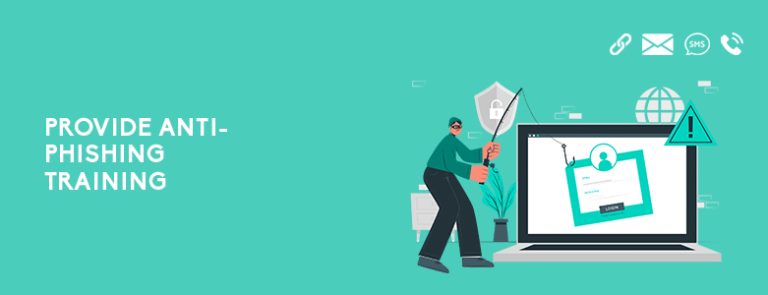How can your organization protect data from insider threats?
- Provide anti-phishing training
- Manage who has access to your data
- Implement User and Entity Behavior Analytics
Whether it’s malicious or unintentional, insiders can put your data at risk, disrupt operations, and damage company reputation. But with the right strategies and IT solutions, this problem can be prevented. Keep on reading to learn more about how to protect your data from insider threats.
What are Insider Threats?

The first thing you should know about insider threats is how they happen. Breaches can occur due to financial motivation, retaliation, or plain carelessness. These types of threats are difficult to detect because a user is given access to the system and data of an organization as part of their job.
Depending on the position and task of an employee, they might be given the privilege to view sensitive information on a daily basis. They may potentially abuse this right to steal information for money, compromise the organization, and the like.
Insider threat detection is made even more complicated because they take place within your network. In order to reduce the risk, here are some things you can implement in your organization.
Provide Anti-Phishing Training

Not all insider threats are motivated by ill intent. Some employees become compromised insiders simply because they don’t have enough knowledge of the risk they pose to the organization.
For instance, they could be targeted by a phishing attack without knowing it. This happens when they’re contacted by a cybercriminal posing as a legitimate institution through email or text message. Employees are lured to provide sensitive data or to open links that trigger a malware download.
This incident could also happen through a phone call. Your employees might receive an unwanted call from an IT helpdesk, in which the caller asks them for credentials before the call can proceed. When this happens, outsiders can gain access to your system and steal information.
This is why regular anti-phishing training is important for all organizations. Managers can simulate personal training programs with each employee, in order to determine who are vulnerable to attacks. To supplement this, employees can also be taught how to spot phishing attacks through collaboration with other employees as well as timely reporting of incidents.
Manage Who Has Access To Your Data

One of the ways insiders can become dangerous is when individuals are provided access to all data in the organization. In this situation, employees can abuse their credentials knowingly or unknowingly. But by managing who has access to your data, you can better secure it. This can be done through the principle of least privilege (POLP).
POLP works by only allowing users the bare minimum privileges that are needed to perform their roles. For example, an employee who needs to enter information into a database only requires the ability to input information. They don’t need to be provided with anything else—such as administrator rights. By implementing POLP, the spread of malware and cyberattacks can be minimized. Instead, any potential breach is contained in a limited area where it first took place.
Some organizations also implement just-in-time (JIT) access, by limiting a user’s access to applications or systems to a predetermined period of time. By allowing access on an as-needed basis, you can minimize the privileges that insiders can take advantage of.
Implement User and Entity Behavior Analytics

Lastly, organizations can also implement User and Entity Behavior Analytics (UEBA) to protect data from insider threats. It involves analyzing user and machine data so that threats could be detected in an organization. By collecting data over a period of time, normal and anomalous behavior could be differentiated. This can help spot security activities that can’t be detected by traditional tools.
For example, when an insider with privileged access is planning a cyberattack, it could be hard to detect. But with UEBA, a baseline, or the typical behavior of a user is established—so it could detect abnormal activity.
Exabeam offers UEBA solutions to help you detect and solve insider threats. It can provide timeline analysis and session stitching so you can tie together unrelated activities to form a complete story. This allows you to get the whole picture of the security events. Other than that, it also provides lateral movement detection, to view the attacker’s journey through the network. All of these features can be automated, so your staff can do more with less time.
Key Takeaway
Detecting insider threats through normal techniques can be a challenge. This is why if you have staff that can compromise your data because of a lack of knowledge, it is important to educate them on how they can prevent an attack. Ensure that you’re only giving the least privileged access required for them to perform their role. Finally, with the help of UEBA, you can track abnormal activity in your network so you can address it promptly.
If you want to know how to protect data from insider threats, you can contact CT Link! We can help you choose the IT solutions that allow you to minimize and prevent this problem in your organization

